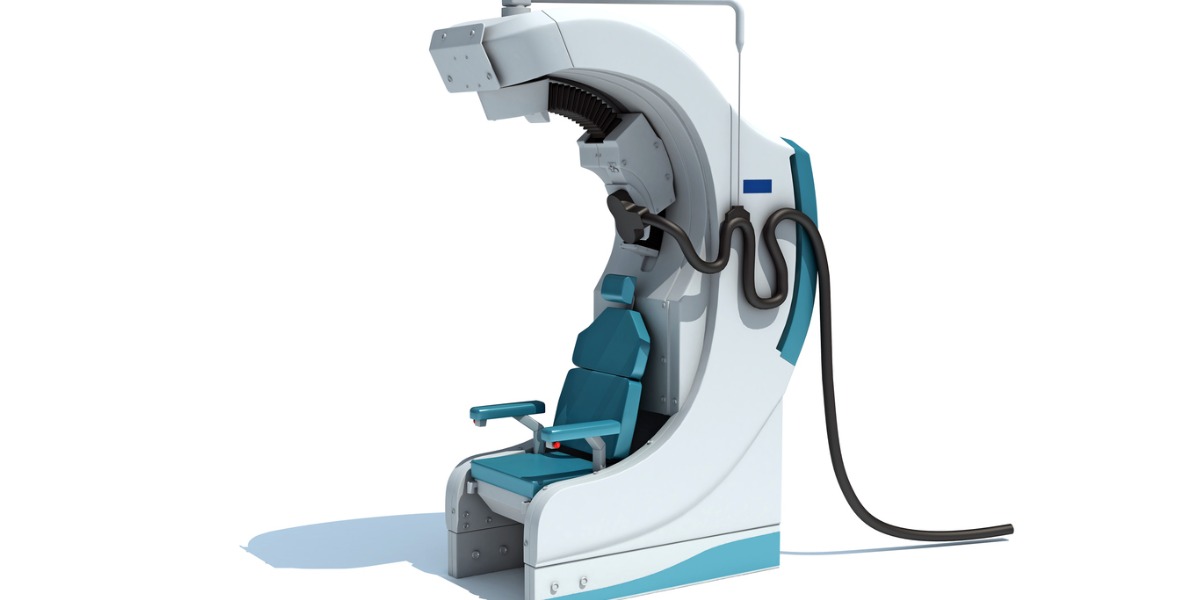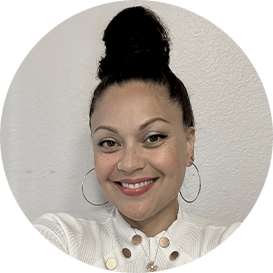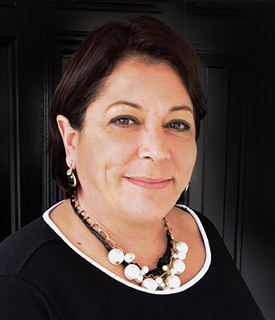When we think of mental health treatment, the first thing most of us think of is psychotherapy or psychiatry, which evokes images of a traditional Freudian scenario with a therapist/psychiatrist sitting in a comfortable chair while the patient relaxes on a couch, and together they talk explore the thoughts and feelings causing problems for the patient: interventional psychiatry is a new approach, and while traditional psychotherapy, as described above, may be a part of the process, there’s something different at the core of the approach.
Experts from the Department of Psychiatry at the University of Iowa define interventional psychiatry (IPS) as follows:
“Interventional psychiatry is a procedural subspecialty of psychiatry focused on the use of novel neurostimulation technologies and pharmaceuticals to treat mental health disorders associated with dysfunctional brain circuitry.”
That definition provides a good initial understanding of IPS. The most important distinction between PS and traditional modes of treatment for mental health disorders is the presence of new and emerging technologies as the core therapeutic approach. The process of IPS does not abandon traditional talk-therapy approaches, but instead, situates them as a supporting treatment for the primary approach, which involves either brains stimulation techniques or treatment with a new class of psychiatric medication called psychedelics, which includes IV ketamine and esketamine (Spravato®).
Let’s take a look at the various therapeutic modes in use under the umbrella term interventional psychiatry.
Interventional Psychiatry (IPS): What are the Various Treatments?
Whereas traditional psychiatric treatment for mental health disorders involves a combination of psychotherapy, medication, lifestyle changes, and psychosocial supports, the Handbook of Interventional Psychiatry identifies the following categories of therapeutic treatments and techniques associated with interventional psychiatry.
We’ll offer a brief description of each category, and indicate approval status from the Food and Drug Administration (FDA) for the treatments in that category.
1. Neuromodulation therapies:
- Transcranial magnetic stimulation (TMS): approved in 2008 for depression, with subsequent approvals for treatment-resistant depression and obsessive-compulsive disorder (OCD). Recent evidence suggests TMS may be effective for comorbid OCD and anxiety, as well as cessation of tobacco use.
- Deep brain stimulation (DBS): approved in 1990s for treatment of movement disorders, with subsequent approvals for treatment of Parkinson’s disease (PD) and treatment-resistant obsessive-compulsive disorder (OCD).
- Vagus nerve stimulation: approved in 2019 for patients with treatment-resistant depression.
2. Electroconvulsive therapy (ECT):
- First used in the 1930s and first approved for psychiatric treatment in the U.S. 1976, ECT has FDA approval for the treatment of major depressive disorder, bipolar disorder, schizophrenia, schizoaffective disorder.
3. Ketamine and/or esketamine:
- Ketamine is a powerful anesthetic approved for use as an anesthetic in humans and animals. Ketamine is not currently approved for any psychiatric use. However, esketamine, a medication derived from ketamine, was approved by the FDA in 2019 for the treatment of treatment-resistant depression.
4. Emerging therapies:
Ultrasound: this traditional imaging technology is currently under research for psychiatric applications, but not yet approved by the FDA.
Optogenetics: this new imaging technology is currently under research for psychiatric applications, but not yet approved by the FDA.
That’s a list of IPS approaches, and their current approval status. On a fundamental level these therapies have one foot in our current approach to mental health disorders, and one foot in the future.
Like most effective treatments, the foundational dogma of IPS therapies is the disease model of mental health, which holds that mental health disorders are the result of atypical/abnormal brain chemistry, which causes problematic emotional and behavioral symptoms. However, unlike talk therapy, which helps patients alter thoughts and emotion through mental processes, and unlike medication, which changes circulating levels of various neurotransmitters in the brain, the core of IPS lies in altering brain structure and function through direct stimulation.
Ketamine and esketamine are exceptions in IPS: they both involve new combinations of medication and psychotherapy, in a nascent field called psychedelic psychotherapy.
What Disorders Does IPS Help?
Evidence shows IPS is effective for treatment of the following clinical mental health disorders:
- Major depressive disorder (MDD)
- Treatment-resistant MDD
- MDD with suicidality
- Anxious depression
- Mood disorders
- Bipolar disease (BD)
- Anxiety disorders
- Obsessive-compulsive disorder (OCD)
- Treatment-resistant OCD
- Schizophrenia
- Schizophrenic affective disorders
In addition, studies show that patients with the most successful treatment experience receive IPS from psychiatrists with the following four essential characteristics:
- Training/experience in psychotherapy and training in TMS in psychotherapy
- Long-term treatment alliance with patient
- Training/experience with ECT, esketamine, or IV ketamine as well as TMS.
- Engaged in ongoing professional training related to patients with treatment-resistant mental health disorders
Next, let’s take a close look at the therapeutic modes we introduce above.
How do IPS Therapies Work?
We adapted the information below from resources provided by the Stanford University Department of Psychiatry and Behavioral Sciences. Here’s a basic idea of what happens during treatment with each modality.
Esketamine
This medication is better known by its commercial name, Spravato®. Esketamine is an intranasal spray delivered exactly like an allergy medication. The medication is in powder form, but delivery works the same as a liquid. The medication itself is derived from ketamine. It’s approved for treatment-resistant depression and major depressive disorder with suicidality. Esketamine is considered fast-acting, and can only be administered under direct medical supervision in approved facilities by approved clinicians.
Transcranial Magnetic Stimulation (TMS)
TMS is brain stimulation treatment that’s proven effective for major depressive disorder (MDD) and obsessive-compulsive disorder (OCD). It’s a non-invasive approach that uses focused electromagnetic pulses generated in the same way as an MRI device, but in the case of TMS, the pulses are used to stimulate the brain and promote healing, rather than generate an image of a specific area of the body. TMS most often occurs in an outpatient office setting, and is most appropriate for patient with MDD who’ve tried standard antidepressants without success.
Deep Brain Stimulation (DBS)
DBS for mental health supports patients with treatment-resistant obsessive-compulsive disorder (OCD). DBS involves implanting electrodes in the brain, connected to a device that generates electrical pulses that modulate brain function. Because it involves surgical implantation of electrodes, DBS is considered an invasive, but reversible, treatment.
Vagus Nerve Stimulation (VNS)
VNS is a type of brain stimulation that’s appropriate – and FDA-approved – for people with treatment-resistant depression. It involves surgically implanting a pacemaker-like device connected to the vagus nerve. Treatment with VNS is rare, because few insurance companies over treatment. However, evidence shows it’s effective and has relatively few side effects.
Electroconvulsive Therapy (ECT)
ECT is the descendent of a form of treatment that has significant negative baggage: electroshock therapy. However, treatment with ECT has changed dramatically. Evidence indicates it’s an effective for severed depression and catatonia – in fact, it’s one of the oldest and most effective treatments for severe depression known to medical science. ECT is non-invasive, and involves using electrical current to induce a controlled seizure in the central nervous system, which can quickly reduce symptoms of depression when psychotherapy and medication fail to yield positive treatment outcomes. ECT is most effective – and most common – among older patients who don’t respond well to traditional treatment. In the past, side effects such as memory loss were a significant worry for people engaging n ECT. However, new developments in delivery and post-treatment care can mitigate memory loss and other side effects of ECT.
Interventional Psychiatry at Crownview Psychiatric Institute
At Crownview, we specialize in treating adults with complex mental health disorders that don’t always respond well to traditional treatment approaches. Our Unified Protocol helps patients with a wide variety of diagnoses. We offer treatment with standard psychotherapy and medication, adjunct therapies such as NAD IV therapy, stellate ganglion block, lifestyle support through our wellness center, and the following techniques associated with interventional psychiatry (IPS):
To learn more, fill out one of our contact forms – or give us a call today.
Remember: the sooner a person who needs treatment for mental health issues gets the treatment they need, the better the outcome.


 Gianna Melendez
Gianna Melendez Jodie Dahl, CpHT
Jodie Dahl, CpHT